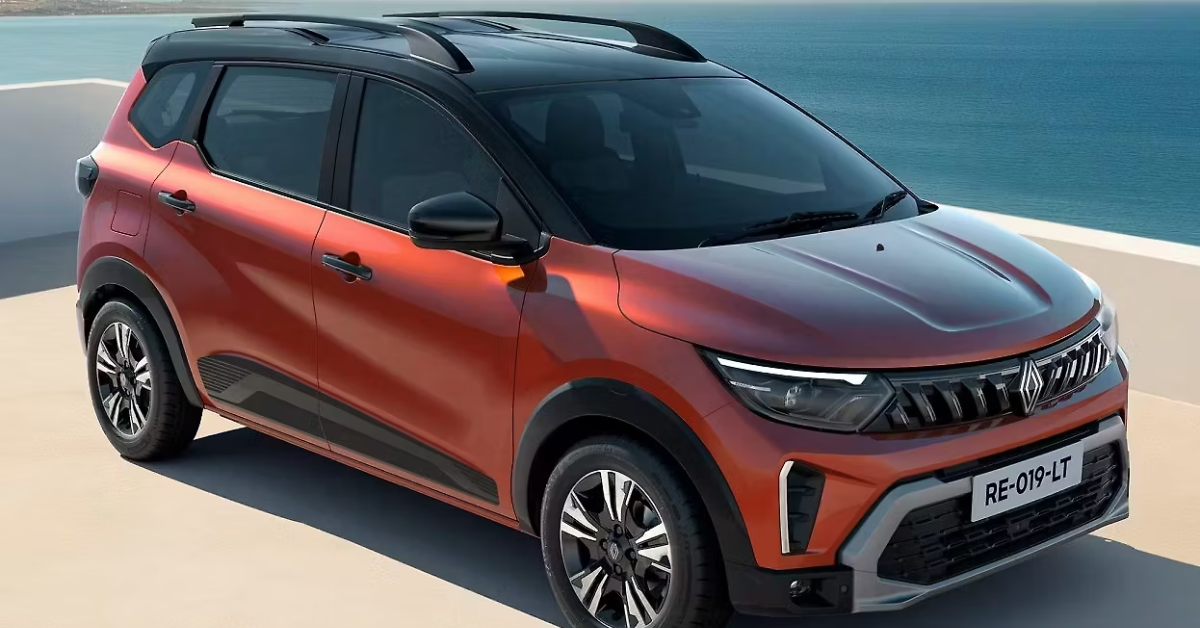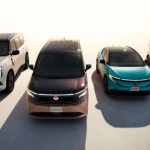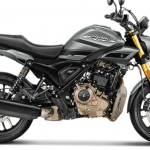Renault has officially unveiled the facelifted version of its popular MPV, the Renault Triber, which continues to attract budget-conscious Indian families with its 7-seater layout and aggressive pricing. The 2025 Triber brings several subtle yet impactful design changes and feature updates. However, despite these enhancements, the model still lacks several key features that buyers now expect in modern-day MPVs.
In this blog, we’ll walk you through the key highlights of the new Triber facelift and the top 5 missing features that might leave some customers disappointed.
🔰 What’s New in the 2025 Renault Triber Facelift?
Before diving into what’s missing, here’s a quick look at what’s new:
- Revised Front Fascia: The facelift features a more premium-looking front grille, redesigned LED DRLs, and a sleeker bumper.
- New Alloy Wheels: Updated 15-inch dual-tone alloy wheels bring a sportier character.
- Refreshed Interior Theme: Renault has introduced new fabric upholstery and dual-tone dashboard accents.
- Updated Infotainment System: The 8-inch touchscreen now supports wireless Android Auto and Apple CarPlay.
- Enhanced Safety: Rear parking sensors and reverse camera are now standard in mid and top variants.
All these changes improve the value proposition of the car, but several competitive features are still missing, which rivals like the Maruti Suzuki Ertiga and Kia Carens offer even in their mid-range trims.
🛑 Top 5 Features Still Missing in the 2025 Renault Triber Facelift
1️⃣ Automatic Climate Control
Despite the cabin updates, automatic climate control is still absent. The Triber continues to offer manual AC controls, which may feel outdated in a segment where climate automation is becoming the norm. For a car marketed as a modern family vehicle, this omission is surprising.
2️⃣ Diesel or Turbo Petrol Engine Option
The 2025 Triber facelift still offers only the 1.0-litre naturally aspirated petrol engine (72 PS/96 Nm), mated to either a 5-speed manual or AMT gearbox. With no diesel or turbo-petrol variant, performance remains modest, especially when fully loaded. In comparison, rivals like the Kia Carens and Maruti Ertiga offer more powerful and efficient engine options.
3️⃣ Six Airbags for Safety
The new Triber continues with dual front airbags, while several competitors now offer up to 6 airbags even in sub-Rs 10 lakh trims. With growing emphasis on safety among Indian buyers—especially for family cars—this limitation may be a deal-breaker for some. A 5-star GNCAP rating (for the previous version) is impressive, but six airbags would have added an extra layer of security.
4️⃣ Telescopic Steering Adjustment
The steering wheel on the Triber remains tilt-adjustable only. For long drives or taller drivers, telescopic (reach) adjustment is crucial for finding the ideal driving position. This small yet important ergonomic miss affects the overall driving comfort, especially on highways or hilly terrains.
5️⃣ Connected Car Features
In today’s connected era, features like vehicle tracking, remote AC control, geofencing, and smartphone app integration are expected, even in budget cars. Unfortunately, the new Triber lacks any form of connected car tech or telematics, which limits its appeal among tech-savvy users.
⚙️ Engine, Performance & Mileage
- Engine: 1.0L, 3-cylinder petrol
- Transmission: 5-speed Manual / AMT
- Power Output: 72 PS
- Torque: 96 Nm
- Mileage: Approx. 18-20 kmpl (claimed)
The performance remains satisfactory for city use and occasional highway runs. The engine feels refined at low speeds but lacks punch for overtaking or carrying seven passengers with luggage.
🎨 Variants and Price Range
The facelifted Triber continues with four variants:
- RXE
- RXL
- RXT
- RXZ
Prices are expected to start from ₹6.50 lakh and go up to ₹8.50 lakh (ex-showroom). While the value-for-money quotient is still strong, the missing features create a gap between expectations and reality.
🎯 Why Renault Triber Still Makes Sense for Budget Buyers
Despite the missing features, the Triber offers certain unique advantages:
- Best-in-class Cabin Flexibility: The modular third row is removable, giving you the option of a 5-, 6-, or 7-seater configuration.
- Compact Yet Spacious: With a sub-4m footprint, it’s easy to drive and park, yet spacious inside.
- Low Maintenance Costs: Renault’s after-sales service and part costs are relatively affordable.
- Decent Mileage Figures: Even with full occupancy, the car returns around 16–18 kmpl in mixed conditions.
🚘 Competitors in the Segment
Here’s how the 2025 Renault Triber stacks up against its key rivals:
| Model | Starting Price | Airbags | Climate Control | Engine Options |
|---|---|---|---|---|
| Renault Triber 2025 | ₹6.50 Lakh | 2 | Manual | 1.0L Petrol (NA) |
| Maruti Ertiga | ₹8.64 Lakh | 4-6 | Automatic | 1.5L Petrol + CNG |
| Kia Carens | ₹10.45 Lakh | 6 | Automatic | Petrol + Turbo + Diesel |
| Toyota Rumion | ₹10.44 Lakh | 4-6 | Automatic | 1.5L Petrol + CNG |
📝 Conclusion: A Strong Contender With Room to Improve
The 2025 Renault Triber facelift does a good job of refreshing the visual and functional appeal of the car without disrupting its value-driven formula. For large families with tight budgets, the Triber still makes a strong case with its practical design and competitive pricing.
However, the lack of premium and safety features could limit its appeal in a market where even entry-level buyers are becoming increasingly demanding. Renault might need to consider a more feature-loaded version in the future to remain truly competitive.

Hello, my name is Muskan Kumari and I am an experienced Digital Marketer. I have been blogging for the last 3 years and I have special interest in SEO. Here I give you easy bikes and writes easy-to-understand reviews and news about the latest bikes, helping readers choose the best options.. My aim is to always provide you with accurate, new and useful information.










